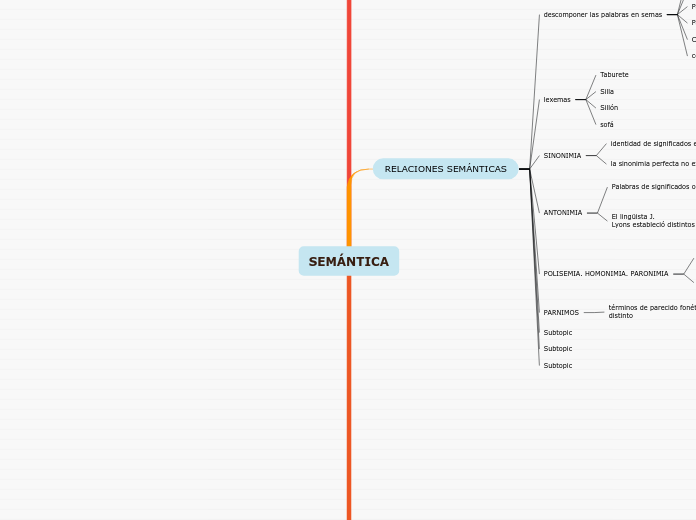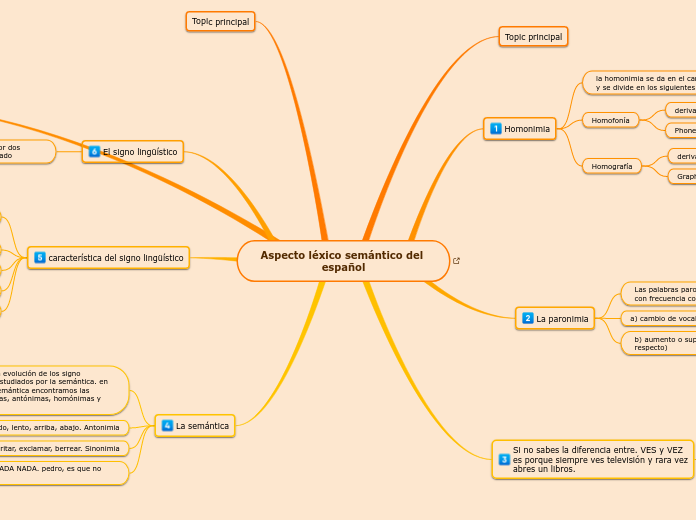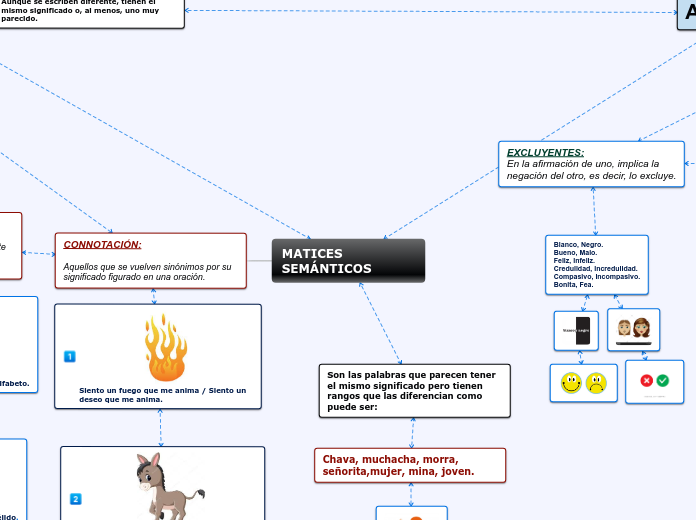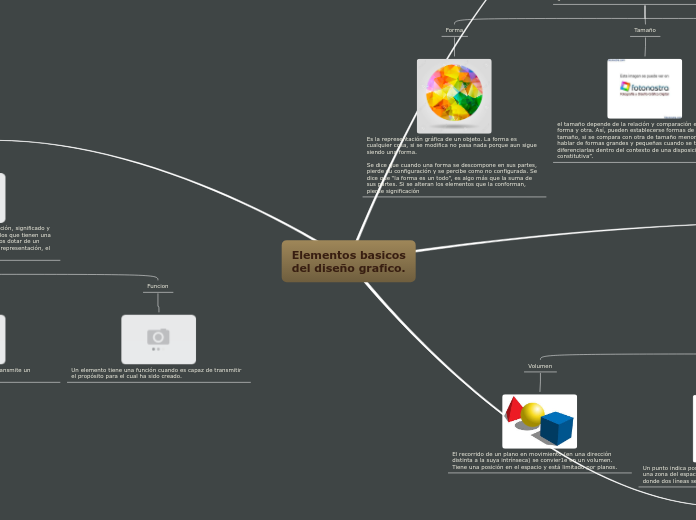SEMÁNTICA
To name your story, you have to think about the overall message and what you want your audience to understand from the story. Also, make it relevant and easy to remember.
CAMBIOS SEMÁNTICOS Y CAMBIOS LÉXICOS
The middle of the story is where you add layers of complications that will lead to the end. Reveal more about the character's journey. Did their personality go through changes? How did they overcome the challenges? And as you build up the story’s central conflict, make it more personal to that character. Also, from the middle act, you have to lead into the final act.
fenómenos lingüísticos
There wouldn't be any tension and excitement in your story if there weren't any obstacles in your character's way.
explican cambios semánticos y léxicos
A story is nothing more than a character overcoming a series of difficulties to reach the desired goal. Obstacles usually create suspense and conflict. In overcoming obstacles, there is growth: weak becomes strong; hatred turns into love; sadness into happiness; wrong into right; lies into truth; or evil becomes good.
See a few examples below:
- stopping a meteor
- finding a killer
- finding love
calcos semánticos
etimologías populares
metonimia (y sinécdoque)
metáfora
Razones extralingüísticas
The ending of a story is essential. We all know that if the ending is weak, what happened before loses its importance. So make it unpredictable, but fair. A resolved ending answers all the questions and ties up any loose threads from the plot.
Causas sociales:
disfemismo
consiste en utilizar, normalmente con un tono humorístico o
con intención degradante
coco/cabeza
eufemismos
se pretende evitar el uso del término considerado tabú: invidente/ciego, anciano/viejo
Causas psicológicas
This is the closure section of the story.
See examples of possible outcomes below:
- all problems have been solved
- it's clear how each one of your characters ends up
- your main character is transformed by the challenge
por asociaciones mentales damos nombres de animales a actitudes o
comportamientos humanos
Causas históricas
This is the moment when the main character surpasses the last obstacle and finally faces their greatest challenge.
The climax usually follows one of these patterns:
- realization
- resolution
- choice
Type in your answer.
aparecen nuevas realidades que han de
ser designadas
Try answering these questions to come up with a closure:
- Have all the problems been solved?
- Is there a clear picture of what happens with each character in the story?
- Has the challenge transformed your main character?
- How do the characters feel in the end?
RELACIONES SEMÁNTICAS
Subtopic
PARNIMOS
Your character(s) need(s) motivation in order to solve the challenge(s).
términos de parecido fonético pero de significado distinto
Why does your character need to confront this challenge? What does he/she expect to accomplish by solving it?
See a few examples:
- will marry in 3 days
- can fix the mistakes of the past
diferencia/deferencia,
POLISEMIA. HOMONIMIA. PARONIMIA
Secondary characters might also have motives that lead them to cross paths with the main character or which might trigger them to help the main character.
palabras homónimas
igual
significante pero cuyos significados son independientes
PISC(EM) > pez (el animal)
PIC(EM) > pez (la sustancia viscosa)
polisemia
un significante posea varios significados.
Pluma: de ave; instrumento para escribir
ANTONIMIA
In most stories, there are 3 challenges. The number 3 is a mystical number symbolizing completeness. Try to come up with interesting challenges with which your character needs to struggle.
See a few examples below:
- turns into a werewolf at night
- is sent back in time
El lingüista J.
Lyons estableció distintos tipos de antonimia:
Recíprocos
comprar/vender
Complementarios
Hembra/macho, par/impar
Antónimos
Palabras de significados opuestos o contrarios
SINONIMIA
Sensory details include sight, sound, touch, smell, and taste. These details are important because they create depth in your setting.
See a few examples below:
- the smell of fresh bread
- the scent of freshly cut grass
- rain falling onto the windshield etc.
la sinonimia perfecta no existe
un término puede pertenecer a un registro formal y el otro al coloquial
Orina/pipi
identidad de significados entre significantes distintos
sofá
Sillón
Silla
Taburete
descomponer las palabras en semas
The weather is an important element in your story because it can highly influence the ambiance and the mood of the characters.
con respaldo
Con brazos
Para varias personas
Para una persona
Para sentarse
Mueble
1.SIGNIFICADO Y SEMÁNTICA
In the beginning of the story (or the exposition), you will need to introduce the setting and characters. You might also want to introduce the main conflict. This part of the story is important because it gives the reader necessary background information and maybe even a first insight into a character’s personality.
Significado denotativo y significado connotativo
The time of the story can also change. It can describe the event of a single day or can include an entire year's plot. Anyway, don't forget to mention it.
La connotación
a la carga de valores afectivos, evocadores, sugeridos que un término
puede poseer.
Individuales
las de los escritores
De grupo
para determinados grupos de hablantes ciertas palabras adquieren distintas
connotaciones
rojo
Socializadas
connotaciones compartidas por toda la sociedad
Burro/torpe
La denotación
El contenido nocional de un término, el significado compartido
por todos los hablantes, su significado objetivo
Significado y sentido
The setting (time & place) of a story can change throughout the plot.
Palabras polisémicas
Your story can take place wherever your imagination will take you to.
For example: in an elevator, in an enchanted forest, etc. Don't forget to give details of the environment each time the setting changes, otherwise, the story can be confusing. Also, mention the seasons as each of them has unique weather and events.
poseen más de un significado
puede tener un vocablo
en el contexto se suele actualizar sólo uno de
ellos
sentido (significado de efecto)
Griego semeion, ‘significar’
Characters are essential to a good story. Usually, the protagonist(s) is/are the most affected by the plot. Introduce a character by focusing on their actions, interests, and occupation, as the physical appearance doesn't make a difference in most cases.
Significado léxico y significado gramatical
Type in the name of your character.
Morfemas
Which traits best describe the character's personality? Choose more if necessary:
introvertedloyalkindindependentquick-thinkingadventuresomeidealisticsweet-naturedcalmrisk-takercreativewittystrictfussyweirdclumsyharshaggressivecarelessclingingcowardlycrueldeceitfulimpulsiveOther
los derivativos (o facultativos)
Add other qualities/attributes of the character.
tienen cierta significación y modifican el significado de la base léxica a la que se unan (en
el proceso de creación de nuevas palabras)
Ejm:
In-, a-, des-: ‘negación, privación’: inmoral, apolítico, deshacer.
-ble: ‘posibilidad’: legible.
-or, -dor: ‘agente’: cazador, actor, ascensor
los flexivos (o constitutivos)
What is your character's main goal?
fight Evilfind lovedefeat his/her enemyrule the worldmake friendstime travelmake an awesome discoveryOther
(propios de sustantivos, verbos, adjetivos, así como determinantes y pronombres) indican distintas
categorías gramaticales como la persona, el número, el tiempo, el modo, etc
lexemas
Add other properties of the character.
significado léxico,
es decir, nos evoca un ‘concepto’, una ‘realidad’
Choose the type of your chacter:
Protagonist (main character)Antagonist (main character's opponent)Flat (stereotypical character)Round (his/ her personality develops throughout the story)Static (doesn't evolve as a person throughout the story)Dynamic (dramatical change in personality)Confidant (the main character trusts him/ her)Foil (contrasting character who enhances the personality of another character)Other
estructura y formación de
palabras










